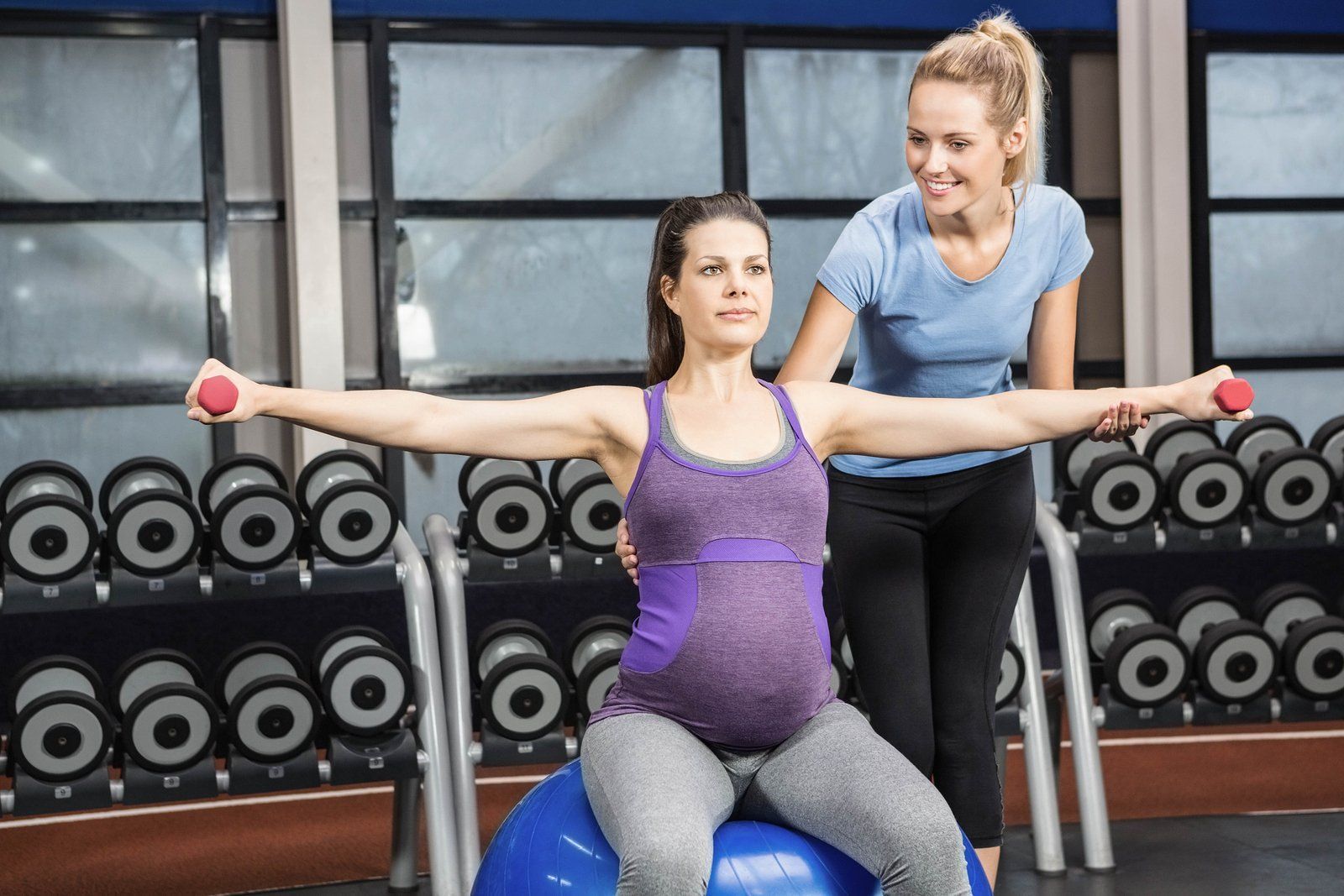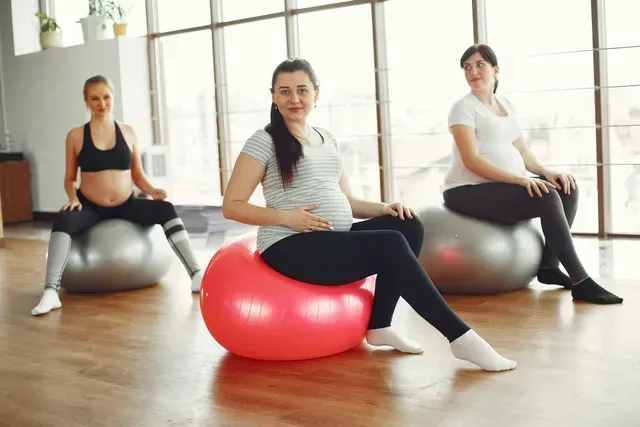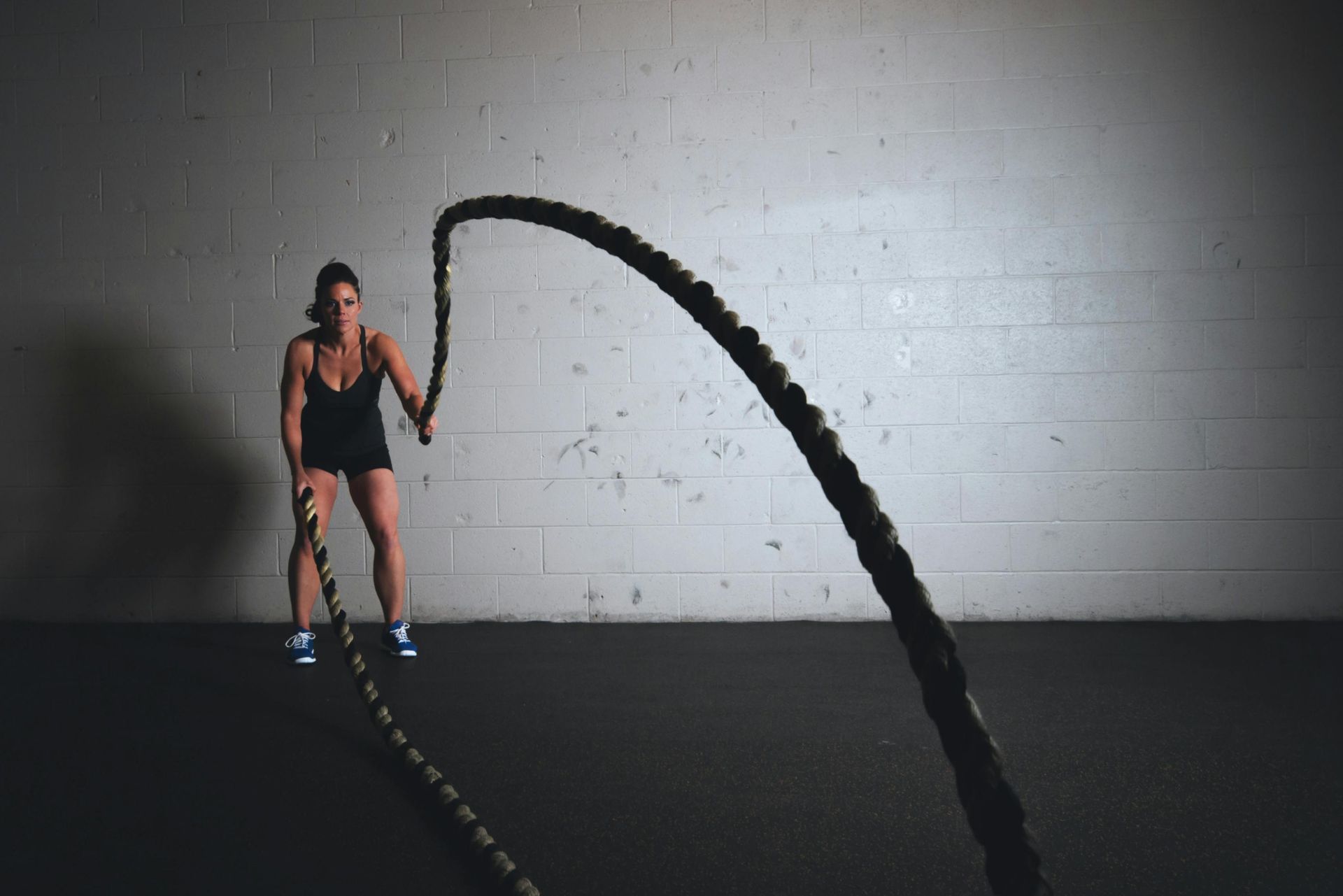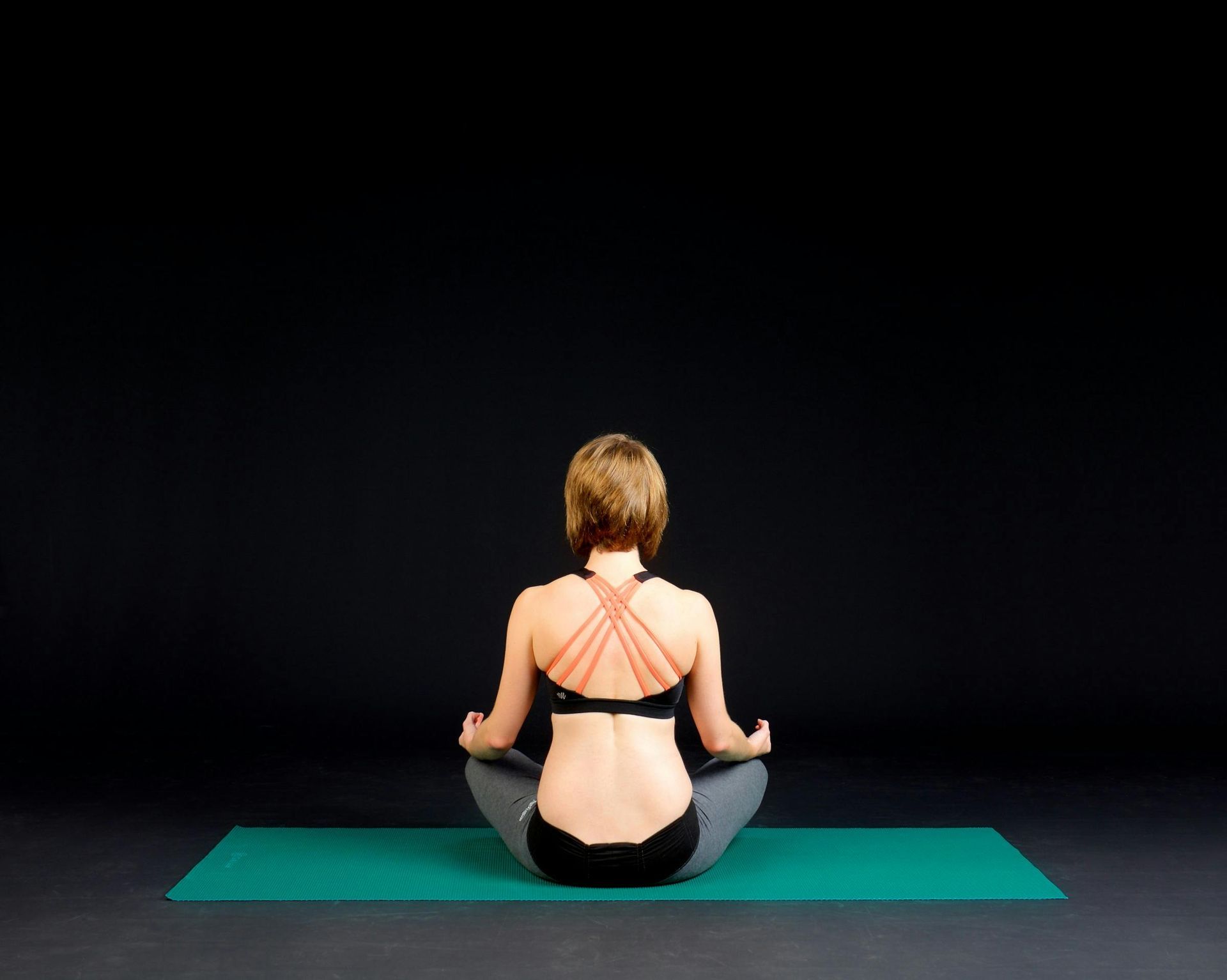
Running is one of the most accessible, effective, and transformative forms of exercise. You don’t need a gym membership, complicated equipment, or hours of free time. You just need a pair of shoes and a few minutes to get moving. As a certified personal trainer in Palm Springs, I work with clients of all ages and fitness levels—and running consistently proves itself as one of the best overall workouts for the body and mind. Whether you’re looking to improve your health, lose weight, build stamina, or simply feel better day-to-day, running offers powerful benefits you can start experiencing right away. 1. Running Improves Heart Health Running strengthens the cardiovascular system more efficiently than almost any other activity. With regular training, you’ll see improvements in: Lower resting heart rate Better circulation Reduced blood pressure Increased endurance A stronger heart also makes everyday activities feel easier—walking, climbing stairs, and even long workdays take less out of you. 2. Running Burns a High Number of Calories If your goal is fat loss, running is one of the quickest ways to make progress. It burns more calories per minute than most forms of cardio and continues to boost your metabolism after your workout. This makes it an ideal choice for anyone who wants effective results in a limited amount of time. 3. Running Builds Strong, Toned Legs Your legs do the work, but the entire lower body benefits: Glutes Hamstrings Quads Calves Running develops strength, definition, and stability—helping you move better and feel more athletic. 4. Running Strengthens Your Core A steady, controlled running stride requires core activation with every step. Over time, this helps: Improve posture Reduce back pain Increase balance Tighten abdominal muscles Your core becomes stronger without doing a single crunch. 5. Running Boosts Mental Health One of the biggest benefits happens outside the body. Running is proven to: Reduce stress Improve sleep Increase mental clarity Boost mood Elevate confidence Lower symptoms of anxiety and depression Just 10–20 minutes can create a noticeable change in how you feel. 6. Running Improves Bone Density Unlike many cardio options, running is weight-bearing. The impact stimulates bone growth and helps prevent age-related bone loss. This makes it especially valuable as we get older. 7. Running Is Convenient and Low-Cost No schedule restrictions. No equipment. No monthly fees. You can run: In your neighborhood At a park On a treadmill On a track While traveling It’s the simplest fitness plan to maintain long-term. 8. Running Builds Discipline and Consistency Running teaches you how to push through resistance, build habits, and set achievable goals. Those small wins stack up quickly and often lead to greater confidence in other areas of life. Beginner-Friendly Running Tip If you’re new to running, start with run/walk intervals : 1 minute jogging → 1–2 minutes walking Repeat for 15–20 minutes. This is the safest, most effective way to build endurance without burnout or injury. Ready to Start Running Smarter? Whether you're new to running or returning after a break, I can help you build a safe, effective running program based on your goals, fitness level, and schedule. As a certified personal trainer with decades of experience, I focus on proper form, conditioning, and long-term success. If you'd like personalized coaching or a structured running plan, reach out anytime. Jason Keigher, CPT – Palm Springs Personal Trainer Call: 760-558-5858

When it comes to functional strength training and total-body fitness, few tools are as powerful and adaptable as TRX suspension training . As a personal trainer in Palm Springs , I use TRX to help clients improve strength, posture, and balance in a safe, low-impact way that delivers visible results. Whether you’re looking to tone up, build core stability, or enhance athletic performance, TRX training offers a smart, efficient, and versatile path to success. What Is TRX Suspension Training? TRX (Total Resistance Exercise) is a suspension system that uses two adjustable straps anchored to a secure point. Instead of relying on machines or heavy weights, you use your own body weight for resistance. By adjusting your angle or stance, you can easily make exercises more challenging or more supportive—making TRX ideal for all fitness levels. TRX training builds strength, stability, and mobility simultaneously. Because it’s a full-body approach, you’ll develop lean muscle, improve coordination, and strengthen your core with every movement. The Key Benefits of TRX Training As a certified personal trainer in Palm Springs, I integrate TRX into many client programs because of its wide-ranging benefits: Total-Body Strength: TRX engages multiple muscle groups at once for a balanced, functional workout. Core Stability: Every TRX exercise challenges your core, improving posture and reducing back pain. Low-Impact & Joint-Friendly: Ideal for older adults or those recovering from injury—TRX builds strength without high-impact stress. Enhanced Balance & Coordination: The suspension system requires control and focus, helping improve movement quality. Efficient Workouts: In just 30 minutes, you can target strength, endurance, and flexibility. Portable and Versatile: TRX can be set up at home, outdoors, or in-studio—perfect for my in-home personal training sessions . TRX Exercises That Deliver Results Here are a few effective TRX movements I often include in my programs for Palm Springs personal training clients: TRX Row – Strengthens the back and arms while improving posture. TRX Chest Press – Builds upper-body power and shoulder stability. TRX Plank to Pike – Tightens the core and enhances control. TRX Squat with Y-Raise – Combines lower-body strength with postural training. TRX Hamstring Curl – Activates glutes and hamstrings for strong, stable hips. TRX Single-Leg Lunge – Improves balance and coordination. TRX Mountain Climbers – Adds a cardio component while sculpting the core. TRX T-Raises and W-Raises – Strengthen the upper back and improve shoulder posture. Each of these can be modified to match your current ability and goals, progressing safely as your strength increases. How I Incorporate TRX in My Personal Training TRX is one of my go-to tools for functional strength and balance training. I use it to help clients of all ages—especially those who want to: Improve stability and coordination Build lean muscle without bulk Strengthen the core and improve posture Increase endurance and overall fitness My Palm Springs personal training programs are built around individualized assessment, smart progression, and ongoing support. I bring the TRX system directly to your location—home, park, or gym—so you can get professional-level results without needing a full gym setup. Why Work with a TRX Personal Trainer in Palm Springs When you train with me, you’ll get: A customized TRX program tailored to your goals and fitness level Professional coaching to ensure proper form and injury prevention Progressive workouts that build strength, balance, and mobility The convenience of in-home or outdoor training anywhere in the Palm Springs area Ongoing motivation, accountability, and measurable progress Get Started with TRX Training Today If you’re ready to experience the power of TRX suspension training in Palm Springs, I can help you get started the right way. Together, we’ll create a program designed to build your strength, improve your core stability, and enhance your overall movement quality. TRX training is efficient, effective, and perfect for clients of all fitness levels. Contact me today to schedule your free consultation—and discover how TRX can transform the way you move, feel, and perform.

You’ve chosen the gown — maybe it’s fitted, strapless, low-back, or just more revealing than your everyday wear. Now all eyes (and cameras) will be on you. Hiring a personal trainer before your wedding isn’t about becoming a fitness fanatic. It’s about sculpting the areas that matter most, zipping up your dress with confidence, and walking into your big day looking as stunning as you’ve imagined. Sculpt the Areas That Matter Most Every bride has specific concerns — arms, back, waist, hips, and glutes. A dress doesn’t lie, especially when it hugs the body or exposes the upper half. Bridal-focused personal training targets exactly what you want to improve, so you look tighter, more toned, and balanced in your gown. This isn’t random exercise. It’s strategic, visual, and effective. Drop Inches, Not Energy Weddings are exhausting enough without starving yourself or overtraining. Instead of chasing quick weight loss, a trainer helps you lose inches the right way — through smart strength training and body recomposition. You’ll feel leaner, stand taller, and maintain your energy as the big day gets closer. A Better Fit at Every Fitting Alterations can only do so much. If your body is changing in a good way — waist shrinking, arms tightening, posture improving — your dress will fit cleaner and smoother. No pulling, tugging, or last-minute crash dieting. Just steady results that make each fitting easier and more exciting. Confidence That Shows in Every Photo A sculpted back, defined shoulders, or visible waistline doesn’t just look good — it changes how you carry yourself. You’ll walk taller, move with more grace, and show up stronger in your photos. That posture and confidence come from more than a great dress — it comes from training for it. Real Results, No Guesswork Your timeline, your body, your dress — all factored into a custom plan that works. Whether you’ve got six months or six weeks, you’ll know exactly what to do, how to do it, and when to expect results. No guessing. Just visible, measurable progress designed to show up when it counts. Bottom Line: Looking great in your dress isn’t about chasing perfection. It’s about making your hard work show. With a personal trainer focused on bridal fitness, you’ll walk into your wedding stronger, leaner, and 100% ready to own that dress — and every camera angle that comes with it. Let’s get started today! Call 760-558-5858 to schedule your free consultation.

Kettlebell training has gained significant popularity over the years—and for good reason. This unique piece of equipment offers a versatile, full-body workout that improves strength, mobility, endurance, and even cardiovascular health. Whether you’re a seasoned fitness enthusiast or just starting your journey, kettlebells are a powerful tool to include in your workout routine. In this article, we’ll explore the origins of kettlebell training, its benefits, and a sample workout to get you started. The Origins of Kettlebell Training Kettlebells date back to 18th-century Russia, where they were initially used as counterweights for measuring goods. Over time, they became a staple for physical training, particularly among Russian strongmen and military personnel. Their compact, cast-iron design allowed for dynamic movements that traditional weights couldn’t replicate, laying the foundation for modern kettlebell training. Why Choose Kettlebell Workouts? Kettlebells aren’t just a trendy fitness tool—they deliver proven results. Here are some of the key benefits: 1. Improved Functional Strength Unlike traditional dumbbells or machines, kettlebells engage multiple muscle groups simultaneously. Movements like the kettlebell swing mimic everyday motions, such as lifting or bending, making them ideal for building strength that translates to daily life. 2. Enhanced Cardiovascular Fitness High-intensity kettlebell exercises elevate your heart rate, offering a cardio component alongside strength training. A study published in the Journal of Strength and Conditioning Research found that a 20-minute kettlebell workout can burn up to 400 calories while improving aerobic capacity. 3. Increased Mobility and Flexibility Many kettlebell exercises involve dynamic, full-body movements that enhance joint mobility and flexibility. The Turkish get-up, for instance, challenges your range of motion while building strength. 4. Core Engagement Kettlebell training activates the core muscles with nearly every movement. Exercises like the kettlebell windmill or swing are particularly effective at building core stability and strength. 5. Time Efficiency Kettlebell workouts combine strength, endurance, and cardio into a single session, making them perfect for busy schedules. Getting Started: A Beginner’s Kettlebell Workout If you’re new to kettlebell training, focus on mastering form before increasing weight. Here’s a simple workout to target multiple muscle groups: Warm-Up (5 Minutes) Arm circles Bodyweight squats Hip bridges Cat-cow stretches Workout (Perform 3 Rounds) Kettlebell Deadlift (10 reps) Targets: Hamstrings, glutes, and lower back How: Stand with feet shoulder-width apart, kettlebell between your feet. Hinge at the hips, grip the kettlebell handle, and lift to a standing position. Kettlebell Swing (15 reps) Targets: Glutes, hamstrings, and core How: With feet shoulder-width apart, swing the kettlebell between your legs, then explosively thrust your hips forward to bring it to chest height. Goblet Squat (10 reps) Targets: Quads, glutes, and core How: Hold the kettlebell by the handle at chest height and perform a squat, keeping your chest upright. Overhead Press (8 reps per arm) Targets: Shoulders and triceps How: Press the kettlebell overhead with one arm, keeping your core engaged and wrist straight. Russian Twist (10 reps per side) Targets: Obliques How: Sit on the floor with knees bent, holding the kettlebell by the horns. Rotate your torso side-to-side while keeping your feet off the ground for an added challenge. Cool-Down (5 Minutes) Forward fold stretch Hip flexor stretch Shoulder rolls Safety Tips for Kettlebell Training Start Light: Use a lighter kettlebell until you’ve mastered proper form. Maintain Neutral Spine: Avoid rounding your back, especially during swings and deadlifts. Engage Your Core: This protects your lower back and improves stability. Consult a Trainer: If you’re unsure about your form, seek guidance from a certified trainer. Kettlebell training offers a unique combination of strength, endurance, and mobility benefits, making it an excellent addition to any fitness routine. With proper form and consistency, you’ll see improvements in your overall fitness and functional strength. Ready to give kettlebell training a try? Reach out to schedule a session and let’s incorporate this dynamic tool into your fitness journey. Sources McGill, S. M., & Marshall, L. W. (2012). Kettlebell Swing, Snatch, and Bottoms-Up Carry: Back and Hip Muscle Activation and Low Back Load. Journal of Strength and Conditioning Research. Farrar, R. E., Mayhew, J. L., & Koch, A. J. (2010). Oxygen cost of kettlebell swings. Journal of Strength and Conditioning Research. ACE Fitness. (2023). Benefits of Kettlebell Training.

As we age, maintaining our balance becomes crucial for daily activities and overall health. Falls are a significant concern for older adults, often leading to injuries and a decrease in independence. According to the CDC, one in four older adults falls each year, making balance training an essential part of any senior fitness routine.

Labor is often described as a marathon, requiring both mental and physical stamina. Preparing your body for this intense experience through regular exercise can help increase your strength, endurance, and resilience, making labor and delivery smoother and more manageable. I focus on safe, targeted prenatal workouts that help you feel strong and prepared for the big day. Benefits of Exercise for Labor Preparation Increases Strength and Stamina: Labor and delivery require endurance and muscle strength, particularly in the core, back, and lower body. Regular exercise builds the strength needed to support active labor, reducing fatigue and improving your ability to push effectively. Improves Flexibility and Mobility: Stretching and flexibility exercises help keep your muscles relaxed and your joints mobile, making it easier to find comfortable positions during labor. This flexibility can also help reduce muscle tension and pain. Enhances Breathing and Relaxation Techniques: Cardiovascular activities, such as walking or swimming, help improve lung capacity and breathing efficiency, which is vital for managing contractions and staying calm during labor. Boosts Mental Resilience: Exercise is a proven way to manage stress and anxiety, helping you stay mentally prepared for labor. Activities like yoga and meditation encourage relaxation and positive thinking, both crucial for labor. Recommended Prenatal Workouts for Labor Preparation Squats: Squats help strengthen the muscles in your legs, hips, and pelvic floor, all of which play an essential role in supporting your body during labor. They also promote flexibility in the pelvic area, which can aid in the birthing process. How to Do Them: Stand with your feet shoulder-width apart, toes pointing slightly outward. Lower yourself as if sitting back into a chair, keeping your chest lifted and knees over your ankles. Hold for a few seconds and return to standing. Repeat 10-15 times. Pelvic Tilts: Pelvic tilts can help relieve back pain, strengthen the lower back and abdominal muscles, and prepare your body for labor by promoting optimal baby positioning. How to Do Them: Lie on your back with your knees bent and feet flat on the floor (or in a tabletop position). Tighten your abdominal muscles and tilt your pelvis upward, flattening your lower back against the floor. Hold for a few seconds, then release. Repeat 10-15 times. Prenatal Yoga: Yoga helps improve flexibility, balance, and muscle tone while promoting relaxation and deep breathing. Poses like the "Child’s Pose" and "Cat-Cow" are especially beneficial for easing tension in the back and preparing the body for labor. How to Do Them: Incorporate a prenatal yoga routine 2-3 times per week, focusing on gentle stretching, breath work, and poses that open the hips and pelvis. Walking: Walking is a low-impact cardiovascular exercise that keeps you active, boosts endurance, and encourages the baby to move into the correct position for birth. How to Do It: Aim for 30 minutes of walking at a moderate pace most days of the week. Wear supportive shoes and maintain good posture to avoid discomfort. Kegels: Strengthening the pelvic floor muscles with Kegels can help you maintain control during labor, support your growing uterus, and reduce the risk of tearing during delivery. How to Do Them: Tighten the muscles you use to stop the flow of urine, hold for 3-5 seconds, and then release. Repeat 10-15 times, several times a day. Breathing Exercises: Deep breathing exercises help you stay calm, focused, and relaxed during labor, improving oxygen flow to you and your baby. How to Do Them: Practice diaphragmatic breathing by inhaling deeply through your nose, expanding your belly, and exhaling slowly through your mouth. Repeat several times a day, especially during your workout sessions. Tips for Safe Prenatal Exercise Consult Your Healthcare Provider: Before starting any new exercise routine, get clearance from your doctor or midwife to ensure the activities are safe for you and your baby. Stay Hydrated and Avoid Overheating: Drink plenty of water and exercise in a cool, ventilated environment to prevent overheating. Modify as Needed: As your pregnancy progresses, modify exercises to accommodate your growing belly and any discomfort. Listen to Your Body: If you feel any pain, dizziness, or shortness of breath, stop exercising immediately and consult your healthcare provider. How I Can Help Prepare You for Labor I am a expert in prenatal fitness, specializing in exercises that build the strength, endurance, and mental focus needed for a positive labor experience. I create personalized workout plans that match your fitness level and goals, ensuring you feel prepared and confident as you approach your due date. Contact Me Today! Schedule a free consultation to learn how my tailored prenatal fitness programs can help you prepare your body for a healthy, active labor.

Yoga is an excellent form of exercise for pregnant women, providing both physical and mental benefits. It helps maintain strength and flexibility, improves balance, reduces pregnancy-related discomforts, and promotes relaxation and mental clarity. I recommend incorporating prenatal yoga into your fitness routine to support a healthy pregnancy and prepare your body for labor and delivery. Benefits of Prenatal Yoga Improves Flexibility and Strength: Yoga stretches and strengthens the muscles used during pregnancy and childbirth, including the core, back, and pelvic floor muscles. This can help alleviate common pregnancy discomforts such as lower back pain and sciatica. Reduces Stress and Anxiety: Deep breathing and relaxation techniques practiced in yoga help calm the mind, reduce anxiety, and improve overall mood. This mental clarity can be particularly beneficial as you prepare for labor. Enhances Balance and Stability: As your belly grows, your center of gravity shifts, affecting your balance. Yoga poses help improve stability and coordination, reducing the risk of falls. Encourages Better Posture: Prenatal yoga emphasizes alignment and posture, helping to counteract the tendency to slouch or overarch the back during pregnancy. Prepares for Labor and Delivery: Yoga teaches breathing techniques, body awareness, and relaxation methods that are invaluable during labor. Certain poses help open the pelvis and prepare the body for delivery. Recommended Yoga Poses for Pregnancy Cat-Cow Stretch (Marjaryasana-Bitilasana): How It Helps: This gentle flow helps relieve tension in the spine and improves flexibility in the back and abdominal muscles. How to Do It: Start on your hands and knees with your wrists directly under your shoulders and knees under your hips. Inhale as you arch your back and look up (Cow Pose), then exhale as you round your back and tuck your chin to your chest (Cat Pose). Repeat for several breaths. Child’s Pose (Balasana): How It Helps: A resting pose that gently stretches the lower back, hips, and thighs, relieving tension and promoting relaxation. How to Do It: Kneel on the floor with your knees apart and big toes touching. Sit back on your heels and extend your arms forward, lowering your chest towards the floor. Rest your forehead on the mat and breathe deeply. Warrior II (Virabhadrasana II): How It Helps: Strengthens the legs, core, and pelvic muscles while improving balance and stability. How to Do It: Stand with your feet wide apart. Turn your right foot out 90 degrees and bend your right knee over your ankle, keeping your left leg straight. Extend your arms out to the sides, palms down, and gaze over your right hand. Hold for a few breaths, then switch sides. Squat Pose (Malasana): How It Helps: Opens the hips, strengthens the legs, and promotes optimal positioning for the baby. How to Do It: Stand with your feet slightly wider than hip-width apart, toes pointing out. Lower into a squat, bringing your hands to prayer position in front of your chest. Use your elbows to gently press your knees apart. Hold for several breaths. Pigeon Pose (Eka Pada Rajakapotasana): How It Helps: Stretches the hip flexors and relieves lower back tension. How to Do It: From all fours, bring your right knee forward and place it behind your right wrist. Extend your left leg back, keeping the hips square. Lower your chest forward and breathe deeply. Repeat on the other side. Bound Angle Pose (Baddha Konasana): How It Helps: Opens the hips, stretches the inner thighs, and improves circulation to the pelvic region. How to Do It: Sit on the floor with your knees bent and the soles of your feet touching. Hold your feet with both hands and gently press your knees towards the floor. Sit up tall and breathe deeply. Tips for Practicing Yoga Safely During Pregnancy Modify Poses as Needed: As your belly grows, you may need to modify poses for comfort and safety. Use props like yoga blocks, bolsters, and blankets to support your body. Avoid Deep Twists and Backbends: Avoid poses that compress the abdomen, deep twists, and intense backbends. Focus on Gentle Movements: Choose gentle, fluid movements that promote relaxation and flexibility. Stay Hydrated: Drink water before, during, and after your practice to stay hydrated. Listen to Your Body: If a pose feels uncomfortable or causes pain, skip it and try a modified version or different pose. How I Can Support Your Prenatal Yoga Practice I specialize in prenatal yoga, providing personalized guidance to help you enjoy a safe and effective practice. I offer personal training sessions that match your fitness level and pregnancy stage, ensuring you feel calm, strong, and flexible throughout your journey. Contact Me Today! Schedule a free consultation to learn how I can benefit you during pregnancy.

Proper nutrition plays a crucial role in a mother’s postpartum recovery and the production of healthy breast milk. After giving birth, your body needs adequate nutrients to heal, regain strength, and provide nourishment for your baby. As a trainer I emphasize the importance of a balanced diet to support both recovery and the unique nutritional needs of breastfeeding mothers. Key Nutrients for Postpartum Recovery and Lactation Protein Why It’s Important: Protein is essential for repairing tissues, rebuilding muscle strength, and supporting overall healing after childbirth. It is also vital for producing breast milk. Sources: Lean meats, poultry, fish, eggs, dairy products, beans, lentils, nuts, and seeds. Calcium Why It’s Important: Calcium is crucial for maintaining strong bones and teeth, especially since breastfeeding can deplete calcium reserves. It is also essential for your baby’s bone development. Sources: Dairy products (milk, yogurt, cheese), fortified plant-based milk (almond, soy), leafy green vegetables, tofu, and almonds. Iron Why It’s Important: Iron helps replenish red blood cells, which can be lost during childbirth. It also supports energy levels and helps prevent postpartum anemia. Sources: Lean red meat, poultry, fish, beans, lentils, spinach, and iron-fortified cereals. Omega-3 Fatty Acids Why It’s Important: Omega-3s, particularly DHA, are important for brain health, mood regulation, and the development of your baby’s brain and eyes if you are breastfeeding. Sources: Fatty fish (like salmon and sardines), walnuts, flaxseeds, chia seeds, and omega-3 fortified eggs. Fiber Why It’s Important: High-fiber foods aid digestion, prevent constipation, and help maintain healthy blood sugar levels, which can fluctuate after giving birth. Sources: Whole grains (brown rice, oats, quinoa), fruits, vegetables, beans, and legumes. Vitamin D Why It’s Important: Vitamin D aids calcium absorption and supports bone health for both mother and baby. It also plays a role in immune function. Sources: Sun exposure, fatty fish, fortified dairy or plant-based milk, and egg yolks. Hydration Why It’s Important: Staying hydrated is essential for milk production, maintaining energy levels, and overall health. Breastfeeding mothers should aim for an extra 700 ml (about 3 cups) of fluid per day. Sources: Water, herbal teas, soups, and water-rich foods like fruits and vegetables. Sample Meal Plan for Postpartum Nutrition Breakfast : Oatmeal with Berries and Almonds Ingredients : Rolled oats, fresh berries (blueberries, strawberries), a handful of almonds, a drizzle of honey, and a splash of milk or plant-based milk. Benefits : Provides fiber, protein, healthy fats, and antioxidants to support energy levels and milk production. Mid-Morning Snack : Greek Yogurt with Honey and Chia Seeds Ingredients : Greek yogurt, a teaspoon of honey, and a sprinkle of chia seeds. Benefits : Rich in protein, calcium, and omega-3s to aid in muscle recovery and support bone health. Lunch : Grilled Chicken Salad with Quinoa and Avocado Ingredients : Grilled chicken breast, mixed greens, cooked quinoa, sliced avocado, cherry tomatoes, and a lemon vinaigrette dressing.Benefits : Packed with protein, fiber, healthy fats, and essential vitamins for recovery and sustained energy. Afternoon Snack : Hummus with Carrot and Cucumber Sticks Ingredients : Homemade or store-bought hummus, carrot sticks, and cucumber sticks.Benefits : Provides fiber, protein, and healthy fats to keep you full between meals. Dinner : Baked Salmon with Sweet Potato and Asparagus Ingredients : Salmon fillet, sweet potatoes, asparagus, olive oil, and herbs (like dill or parsley). Benefits : Rich in omega-3s, vitamins, and minerals to support milk production and overall health. Dessert : Fresh Fruit Salad with a Dollop of Yogurt Ingredients : Mixed fresh fruits (like kiwi, mango, berries), and a spoonful of plain yogurt.Benefits : Provides hydration, vitamins, and a touch of natural sweetness to end your day. Tips for Maintaining a Balanced Postpartum Diet Eat Small, Frequent Meals: Aim for 5-6 small meals a day to keep your energy levels steady and support milk production. Prioritize Nutrient-Dense Foods: Focus on whole foods that are rich in essential nutrients to promote healing and sustain energy. Stay Hydrated: Drink plenty of water throughout the day, especially if breastfeeding, to maintain milk supply and overall health. Include a Variety of Foods: Eating a wide range of foods ensures you and your baby get all the necessary nutrients. Listen to Your Body : Pay attention to hunger and fullness cues, and don’t be afraid to eat more or less depending on how you feel. How I can Support Your Postpartum Nutrition I recognize that every new mom’s nutritional needs are unique. I offer personalized meal planning and nutrition guidance to support your postpartum recovery and breastfeeding journey. I help you find simple, delicious ways to nourish yourself and your baby. Contact Me Today! Schedule a free consultation to learn more about my postpartum nutrition support services and how I can help you thrive during this special time.

Your wedding dress is a key part of your big day, and how you feel in it is just as important as how it looks. Tailoring your pre-wedding workout to complement the style of your dress can not only enhance your appearance but also boost your confidence as you walk down the aisle. While I don't offer specific classes like yoga or HIIT, I can guide you through personalized workouts that are designed to focus on the areas most highlighted by your dress style. Here’s how you can prepare physically for different types of wedding dresses. 1. Strapless & Sleeveless: Focus on Arms and Shoulders For dresses that show off your arms and shoulders, you'll want to ensure these areas look toned and elegant. Exercises that target the biceps, triceps, and deltoids are essential. Incorporating resistance bands and light weights into your routine can help sculpt and define these muscles, giving you the confidence to showcase your upper body. 2. Backless: Strengthen Your Back A backless dress demands a strong, smooth back. Workouts focusing on the upper and lower back can enhance your posture and build the necessary strength to carry off this daring style. Rowing exercises and pull-ups can be incorporated into your fitness plan to ensure your back looks as stunning as the front. 3. Form-Fitting: Core and Cardio For mermaid or sheath dresses that hug your figure, a strong core and cardiovascular fitness are key to ensuring you look breathtaking. Planks, abdominal crunches, and rotational movements can tighten and define your midsection, while regular cardio sessions will help maintain a slim silhouette. 4. Full Skirt: Lower Body and Stamina Ballgowns and dresses with fuller skirts might seem forgiving, but they still require a strong lower body to carry the weight of the fabric gracefully. Squats, lunges, and leg presses will strengthen your legs and buttocks. Additionally, building endurance through longer cardio sessions will help you stay comfortable and energetic throughout the day. 5. Short or Tea-Length: Legs and Overall Tone If your dress shows off your legs, focusing on leg toning exercises will be beneficial. Additionally, maintaining an overall toned body will help these styles look their best. A mix of strength training and plyometrics can keep your legs shapely and your physique balanced. Integrating Your Dress Style Into Your Workout Plan As your personal trainer, I can help you tailor your workout plan to suit the style of your wedding dress. By understanding the specific requirements of your chosen dress style, we can focus on exercises that enhance those areas of your body most on display. Whether it’s strengthening your back, toning your arms, or sculpting your legs, I’ll guide you through targeted workouts that align with your aesthetic goals for the wedding. Remember, the goal of your pre-wedding fitness plan should not only be about looking great but also feeling strong, confident, and poised as you step into a new chapter of your life. Let's create a workout regimen that helps you achieve exactly that!

Planning a wedding is an exhilarating journey, filled with joy and celebration but also accompanied by a fair share of stress and anxiety. As you navigate through venue selections, guest lists, and endless decision-making, it's crucial to find moments of peace and clarity. Integrating mindfulness and meditation into your daily routine can be a game-changer, providing essential stress relief and enhancing your overall well-being as you approach your big day. Here's how you can use these practices to stay centered and enjoy every moment of your wedding preparation. The Benefits of Mindfulness and Meditation Mindfulness and meditation can significantly reduce stress and anxiety, which are common as you plan your wedding. These practices help you remain present and engaged, making you more aware of your thoughts and feelings without becoming overwhelmed by them. This heightened awareness can lead to better decision-making and a more enjoyable wedding planning experience. Simple Mindfulness Exercises 1. Focused Breathing: Take a few minutes each day to concentrate solely on your breathing. Sit in a quiet place, close your eyes, and breathe deeply. Inhale for a count of four, hold for a count of four, and exhale for a count of four. This simple technique can help reduce stress and refocus your mind. 2. Mindful Walking: Whether it's a walk through your neighborhood or a stroll in a local park, use this time to really engage with your surroundings. Notice the sounds, the smells, and the colors around you. This can turn a simple walk into a refreshing mental reset. 3. Engage Your Senses: Try activities that involve your senses, such as cooking a new recipe or gardening. Pay close attention to the textures, smells, and tastes. Engaging your senses can ground you in the present moment and push away stress-inducing thoughts. Incorporating Meditation into Your Routine 1. Guided Meditation: Use guided meditations available through apps or online. These sessions can range from five minutes to an hour and are led by experts who can help you find inner peace and balance. Even short sessions can be profoundly beneficial. 2. Visualization Techniques: Spend some time visualizing your perfect wedding day. Imagine it unfolding smoothly, filled with joy and laughter. Visualization not only helps in reducing stress but also creates a positive outlook. 3. Breath Awareness Meditation: This involves focusing on the natural rhythm of your breath. As you focus on your breathing, try to let go of other thoughts. Whenever you find your mind wandering, gently bring it back to your breath. This practice is particularly effective for calming the mind before bed or first thing in the morning. Making Mindfulness a Part of Your Wedding Journey As your personal trainer, I can help incorporate mindfulness techniques into your fitness routine. Combining physical exercise with mental health practices creates a holistic approach to your wellness, especially beneficial during this busy time. We can begin or end each session with a few minutes of meditation or incorporate mindful breathing exercises into our workouts. Mindfulness and meditation offer powerful tools for managing stress and enhancing your enjoyment of the wedding planning process. By making these practices a part of your daily routine, you can maintain your serenity, focus, and joy as you move closer to your special day. Let's embrace these techniques to ensure you feel as good on the inside as you will undoubtedly look on the outside.